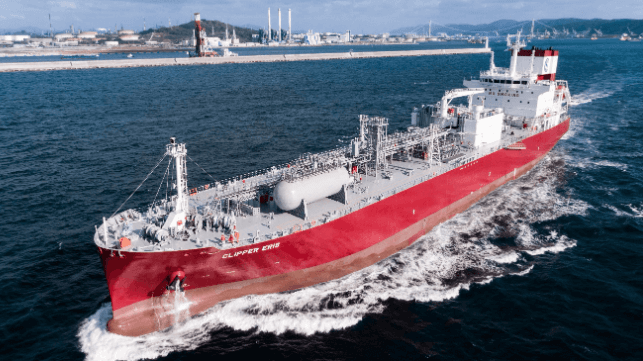Wärtsilä Launches Onboard Carbon Capture System, Key to Cutting CO2

In a development Wärtsilä calls a breakthrough in decarbonization, the company has announced the commercial launch of its much-anticipated onboard carbon capture system. Wärtsilä reports successful trials at sea and at its plant in Norway, and says the ability to capture CO2 from ship exhaust systems will have a major impact on the industry’s efforts to reduce GHG emissions.
"CCS is a game-changer for the maritime industry, and we are already seeing huge interest in the market for this solution," said Håkan Agnevall, President and CEO of Wärtsilä.
According to the company's tests, the new Wärtsilä system can reduce vessel CO2 emissions by up to 70 percent - providing shipowners with an immediate way to meet carbon regulations, without waiting for costlier and less readily available green fuels. Based on testing, Wärtsilä estimates that the total cost comes to about $54-76 per tonne of CO2, including capital and operating costs. Any carbon-based fuel can work, and it's straightforward for the crew to operate and maintain, says Wärtsilä President of Marine Solutions Roger Holm.
Wärtsilä has been developing this technology since 2019, but the commercial launch follows the retrofit of the first shipboard system onboard Solvang ASA’s Clipper Eris (18,000 dwt). The system has been in operation since the Clipper Eris set sail from Singapore in February 2025.
Wärtsilä is among the biggest suppliers of engineered solutions in the maritime industry, and Holm says that the company is becoming a strategic partner for shipowners rather than a vendor of individual systems. That is especially true as owners look for guidance on how to make the green transition.
"We have the broadest offering portfolio in the maritime industry. We can do green fuel engines, we can do carbon capture, and we can do other efficiency improvements, like voyage optimization. So thanks to that total picture, we can have a different discussion than if you only have one tool in the toolbox," Holm says. "It's really rewarding to talk to our customers from this strategic angle, more than being just an equipment provider."
Costs and regulatory requirements are critical to picking the best options for owners, Holm says. Each shipowner will use CO2-saving tools like CCS to meet their own objectives, and each use case is unique. "This is what we discuss with every customer we meet. How do you decarbonize in a way that you also optimize the financial feasibility? How do you decarbonize at the right speed? This is a key discussion we have with every single customer," Holm says.
Since decarbonization is a long road, it often starts by building ships today that can be upgraded later when the market conditions are right. Solvang ASA, Clipper Eris' owner, is working with Wärtsilä on making its next generation of ships ready for later installation of CCS. This includes CCS-ready scrubber systems for HFO operation, as well as space and utility requirements for an eventual upgrade.
